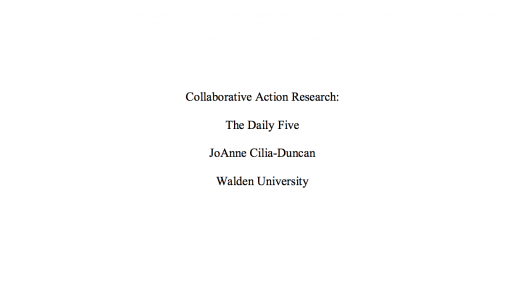Are There Really 5 Rounds?
Join Our Community
Access this resource now. Get up to three resources every month for free.
Choose from thousands of articles, lessons, guides, videos, and printables.

The Daily 5 was created to provide instruction and expectations that match brain development. The structure consists of brief focus lessons and sessions of Daily 5 where students work on their choice of five authentic literacy tasks (Read to Self, Work on Writing, Read to Someone, Listen to Reading, and Word Work).
Focus lesson—Length of lesson coincides with the age of students (five-year-old students = five-minute lesson). Focus lesson contains content from curriculum requirements based on class need as a whole.
Session of Daily 5—Length of a session of Daily 5 coincides with student stamina (how long the class is able to engage in independent work).
Daily schedules, curriculum requirements, and student stamina are all key factors in how many focus lessons and Daily 5 sessions will be completed in a single day. Depending on the above factors, a regular school day (after introducing all tasks and choice) will typically have anywhere from one to three sessions of Daily 5.
Primary—Focus lessons in grades K–2 are 5–7 minutes in length, and Daily 5 sessions typically end up being 15–25 minutes long. In a 90-minute block, we are able to provide three focus lessons and three sessions of Daily 5. Primary students choose three tasks total (one reading, one writing, and one choice).
Intermediate—Focus lessons in grades 3–5 are 8–10 minutes in length, and Daily 5 sessions typically end up being 30–35 minutes long. In a 90-minute block, we are able to provide two focus lessons and two sessions of Daily 5. The majority of intermediate students will do Read to Self and Work on Writing.
Middle and High School—Focus lessons at this age are no longer than 10 minutes in length, and Daily 5 sessions can last around 40 minutes. In a 60-minute block, we are able to provide one focus lesson and one session of Daily 5 work time. Often at this age students check in with their goal and the task they will be using to work on that goal (sometimes more than one).
Although these are great guidelines to help plan your schedule, we have found that success comes when we use our students as barometers and don’t get tied into stringent and rigid time blocks. We’ve had days when intermediate students do three rounds and primary four. The trick is to be keenly aware of the moment independent behaviors begin to slip. When this happens, pull students back together for a brain and body break, focus lesson, I-chart review, or simple reset.






